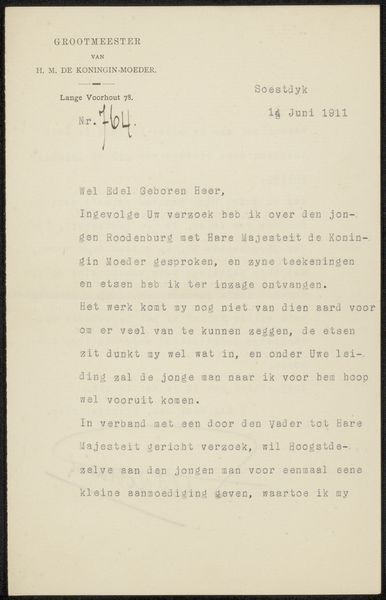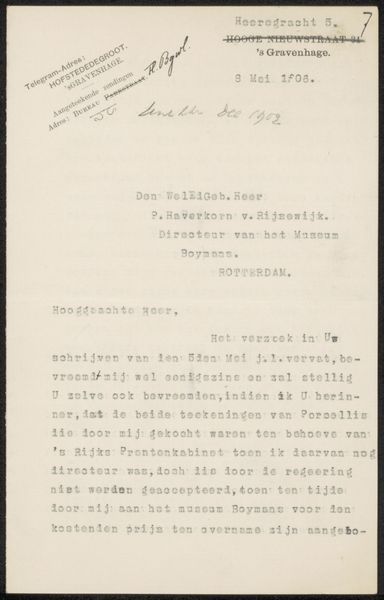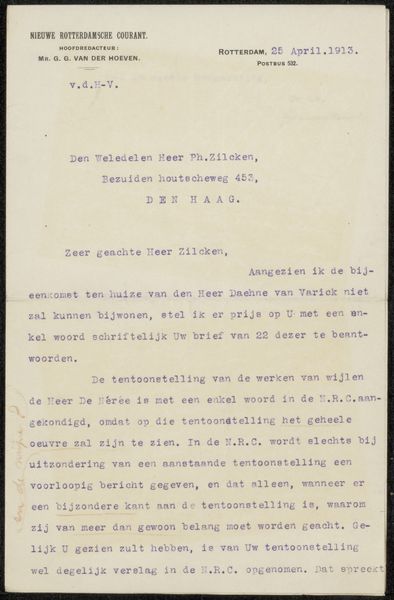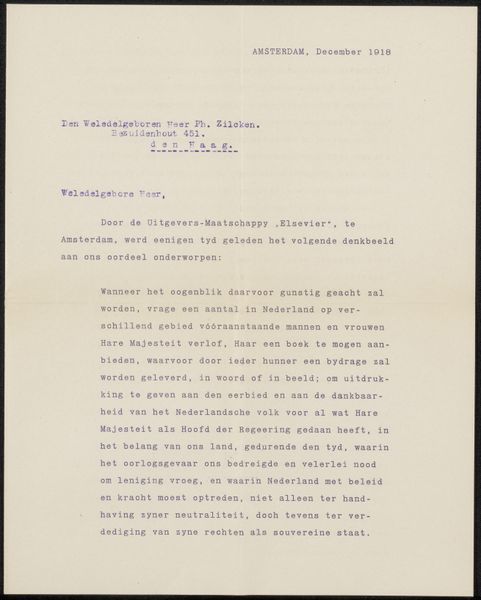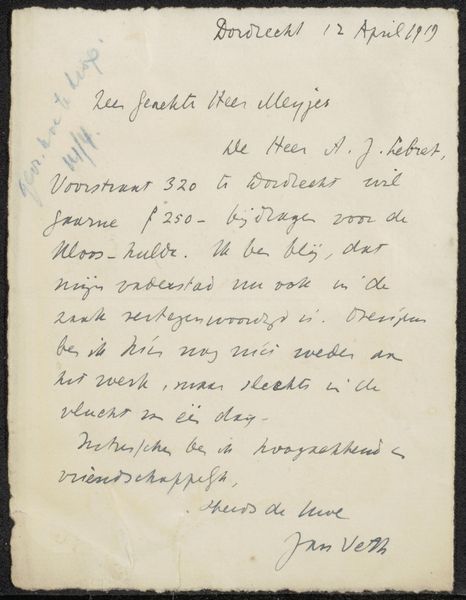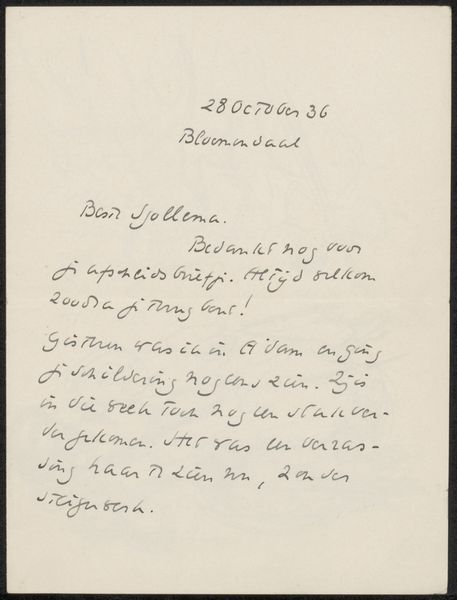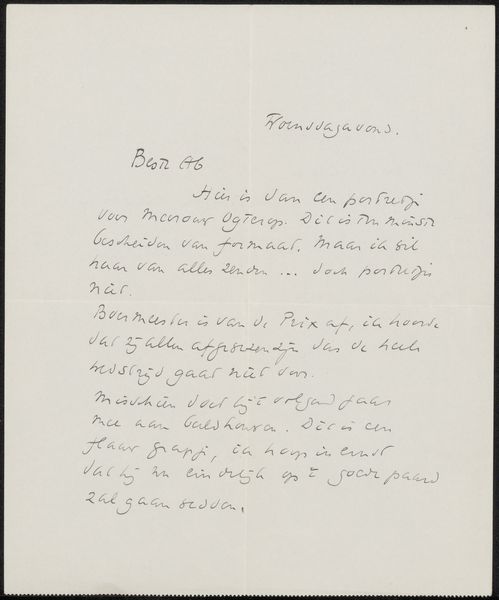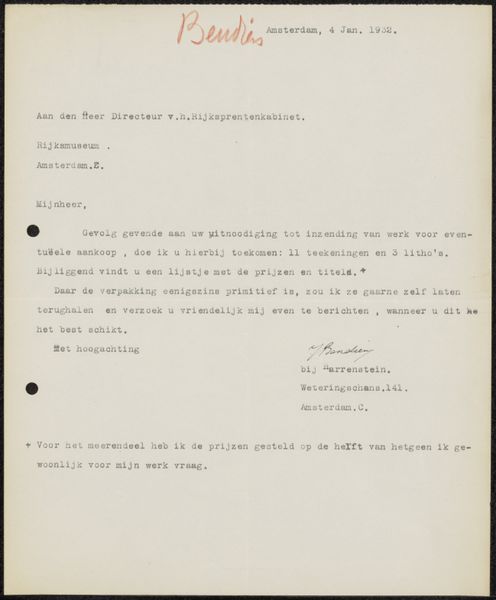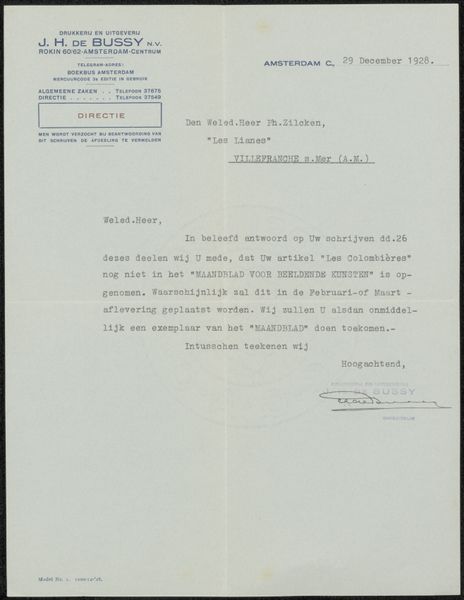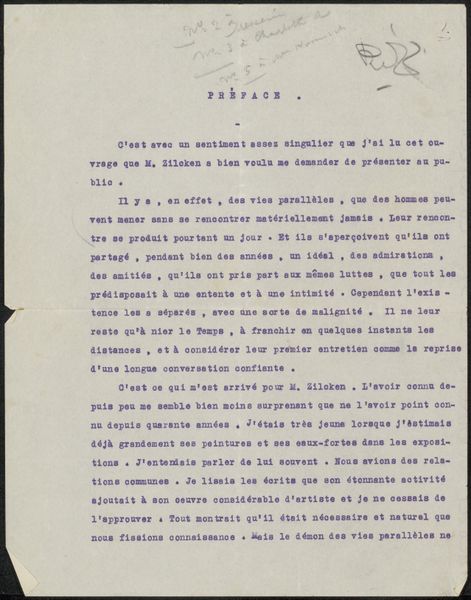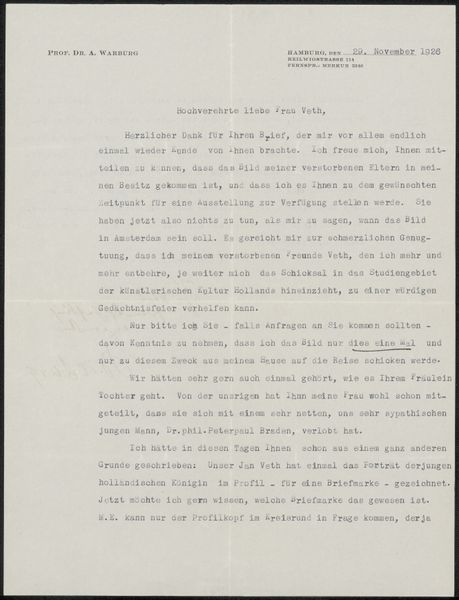
drawing, paper, ink
#
drawing
#
paper
#
ink
Copyright: Rijks Museum: Open Domain
Curator: This delicate drawing in ink on paper is entitled "Uitnodiging aan Philip Zilcken," which translates to "Invitation to Philip Zilcken," potentially created around 1906 by Grada Hermina Marius. Its size and format suggest a personal correspondence. What's your initial impression? Editor: It strikes me as something quite fragile and intimate, really. I get the sense of an internal dialogue around artistry happening at that time and I find it poignant to consider its materiality—a trace of thoughts in a specific historical context. Curator: Exactly. Grada Hermina Marius was an art critic, art historian and curator. In the Netherlands, at the beginning of the 20th century, she actively promoted modern art. Zilcken was an artist, critic and print maker. She is clearly appealing to him in his capacity as an expert. Editor: The letter asks: “What significance does Rembrandt's art have for yours?" Knowing the intense cultural value attached to Rembrandt in Dutch identity, asking an artist about his relation to Rembrandt positions him in a genealogy, demanding he engage with a historical legacy, no? It shows the power of this imagery. Curator: Precisely! Museums and the art world were actively constructing national artistic identities at the time. Placing Rembrandt on a pedestal served the national pride. Inviting an artist to comment situates him within that discourse, impacting how his work is viewed and understood within the larger cultural narrative. Editor: It is also interesting, in considering Marius' role as an early female curator and art historian, how these conversations are taking place between artists and those in what are traditionally male-dominated fields of expertise and taste. Did Marius hold this invitation in the hope of leveraging Zilcken’s work or her own views about art in shaping the canon? What influence was exerted from that time period on her role as an influential art critic and art historian? Curator: Absolutely. These epistolary exchanges are invaluable for understanding the subtle negotiations and power dynamics within the art world of that era. Editor: Looking at the piece now, the question asked in the invitation highlights how images affect perception and history—in essence creating an understanding of Dutch society at the time, its values and assumptions that underpin national artistic production and artistic assessment. Curator: Indeed, it makes us think about how those dialogues continue to shape art history and our understanding of art's place in the world today. Editor: Definitely. A reminder to look critically at what we value and whose voices shape our cultural narratives.
Comments
No comments
Be the first to comment and join the conversation on the ultimate creative platform.

